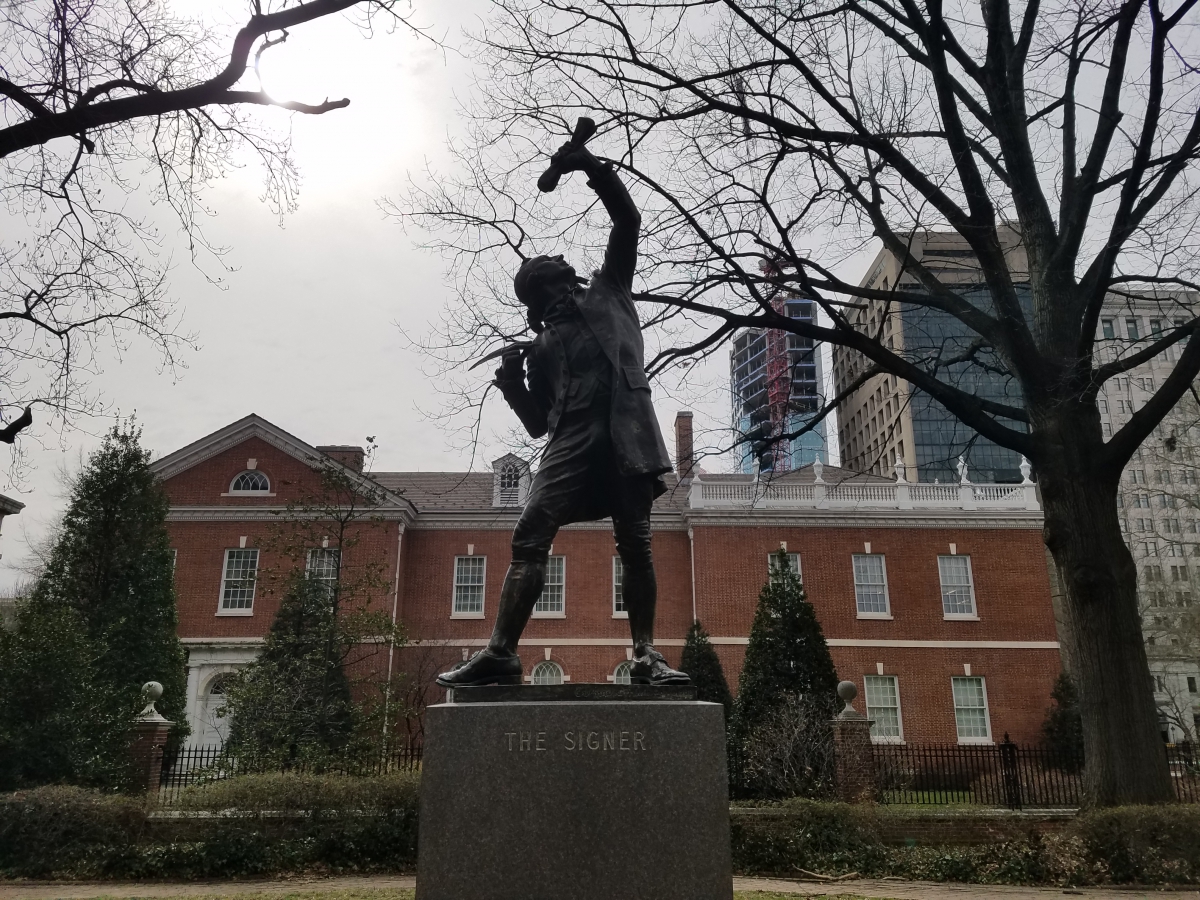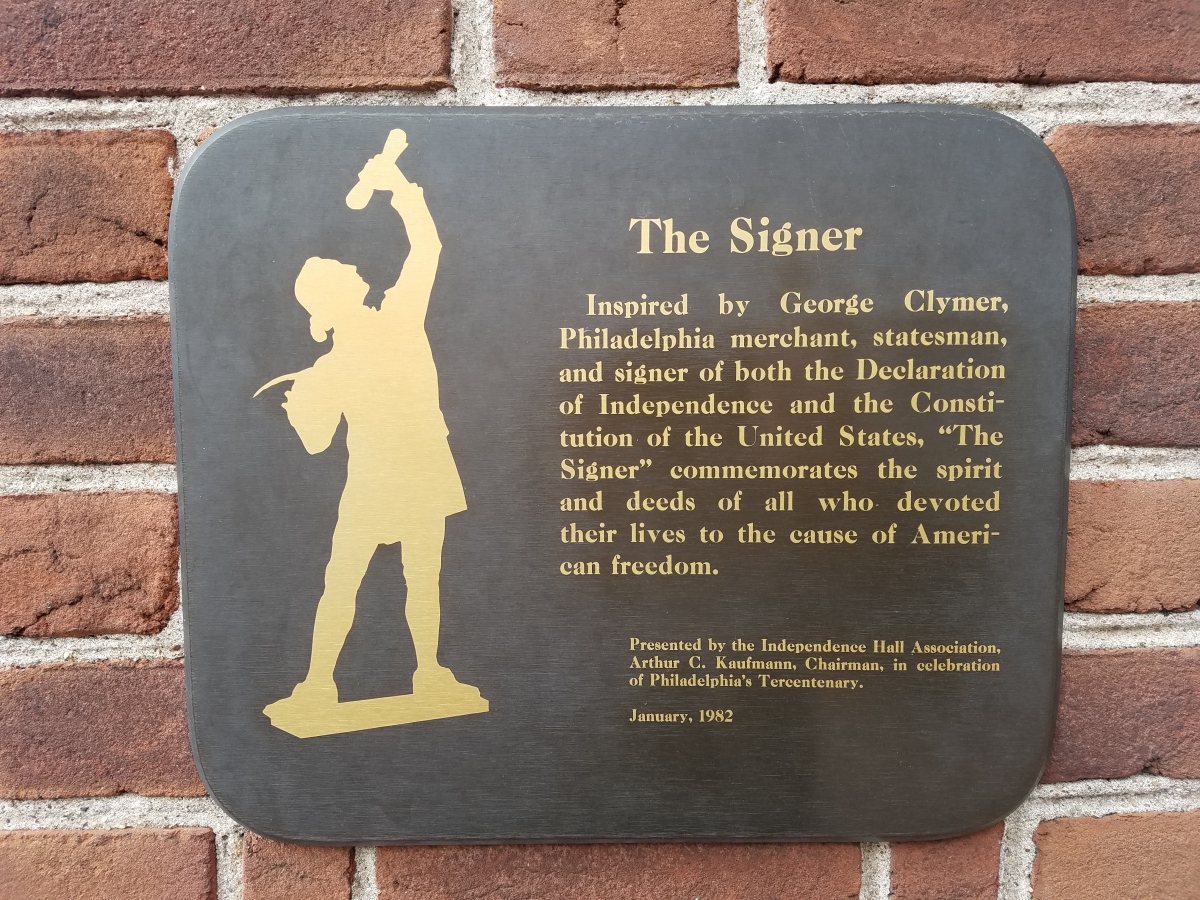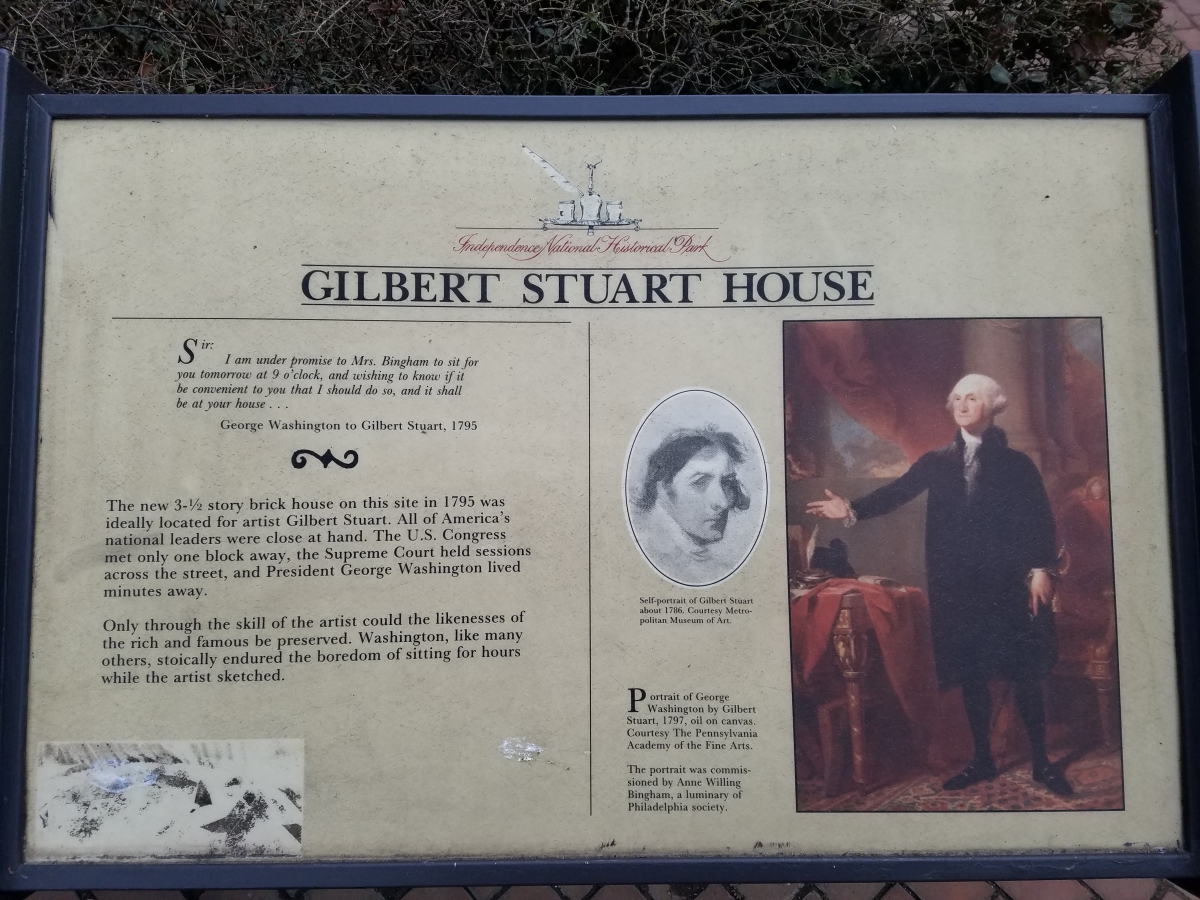An easily overlooked gem of Independence National Historical Park has a lot of history
The History
Known today as Signers’ Garden, this small plot of land within Independence National Historical Park is meant to pay tribute to the courageous individuals who signed The Declaration of Independence on August 2nd, 1776 and the United States Constitution on September 17th, 1787. Both of these events have had a profound impact not only on the history of America but on the history of the world. To pay tribute to these two incredible events in human history that took place right across the street at Independence Hall, Signers’ Garden asks visitors to think about the people who actually choose to sign these documents and everything it meant to sign them.
In the case of The Declaration of Independence, a signature was an act of treason against the wealthiest and most powerful nation in the world. Upon signing The Declaration of Independence Benjamin Franklin famously remarked that “We must, indeed, all hang together or, most assuredly, we shall all hang separately.” And years after the fact, another Philadelphian, Benjamin Rush looked back upon the signing of The Declaration of Independence and recalled the “pensive and awful silence which pervaded the house when we were called up, one after another, to the table of the President of Congress to subscribe what was believed by many at that time to be our own death warrants.”

Although the British would never execute any of the signers of the Declaration of Independence, you can understand how real that threat was when they signed the document, and yet the signers were willing to risk it all none the less. The very words of the Declaration of Independence make it clear what was at stake. Thomas Jefferson’s Declaration ends thusly: “And for the support of this Declaration, with a firm reliance on the protection of Divine Providence, we mutually pledge to each other our Lives, our Fortunes, and our sacred Honor.”
Eleven years later, the signers’ of the United States Constitution were perhaps less fearful of risking their lives for signing the Constitution. The Revolutionary War was now over and there was no threat of British reprisal, but signing the Constitution was not without consequence. Our new nation was failing, in part due to mistrust between the states. To sign their names to a radical new constitution that created a stronger, more centralized United States Government was itself a risky act. The signers didn’t risk making themselves the enemies of the British but arguably even worse, they risked becoming the enemies of their fellow statesmen, their neighbors, their business associates, their friends, their families.
But just like those who signed the Declaration of Independence, the signers of the Constitution were able to put their own interests aside. They were willing to risk everything, to do what they believed to be right, for the benefit of greater society. And in signing the Constitution these men would end up supporting a document that would go on to influence countless other Constitutions and governments around the world.
What to See
The centerpiece of Signers’ Garden is the giant statue of “The Signer,” created by EvAngelos W. Frudakis in 1980. In the statue, a triumphant figure holds a quill in one hand and clutches a document in the other as he raises his arm in the air in celebration. Because there is no name on the statue and it is labeled only as “The Signer,” some assume that the statue is not meant to be anyone in particular, but that is not the case, “The Signer” is indeed modeled after a specific historical figure.
Many assume “The Signer” is perhaps the most famous signer of the Declaration of Independence, John Hancock. Hancock is so famous for his large and ornate signature on the Declaration that indeed his very name has become synonymous with the word “signature” over the years. While the President of the Second Continental Congress, and well known first signer of the Declaration of Independence would be a good guess, it is not Hancock. Nor is it Thomas Jefferson, the primary author of the Declaration of Independence… or James Madison, the primary author of the United States Constitution. Instead the statue depicts someone who not nearly as well-known, a gentleman named George Clymer.

George Clymer may not be the most famous signer in American history but he did lead quite a life. A lifelong Philadelphian, Clymer was orphaned at a very young age but would become a successful merchant under the guidance of his aunt and uncle. Clymer was still a young man in his twenties when he began organizing opposition to the Stamp Act in Philadelphia. From that point on, Clymer would become very involved in politics and leading demonstrations against the British and unjust taxation without representation. Clymer would be selected to represent Pennsylvania in the Second Continental Congress where he became an early advocate for American Independence and would eventually sign the Declaration of Independence.
Eleven years later, Clymer was also selected to be a member of the Philadelphia Convention where he would be involved in drafting, debating and eventually signing the United States Constitution. Clymer was actually one of only six people to sign both the Declaration of Independence and the United States Constitution. The other five are Benjamin Franklin, Roger Sherman, Robert Morris, James Wilson and George Read. Being one of the unique six who signed both of the famous of documents that are celebrated within Signers’ Garden is a big reason why it was Clymer’s likeness that was chosen for the statue.
Insider Info
While today Signers’ Garden is a public space, it was actually once private property, a house owned by a gentleman named Gilbert Stuart. Stuart was a renowned portrait painter who moved right in the area that served as the epicenter of government in the early American capital city. Many of Clymer’s customers would be those in the United States Government in those early years here in Philadelphia.

Having a portrait painted in Stuart’s day was quite the tedious and painstaking affair as it would have involved standing or sitting still for hours while the artist painted your likeness. None the less, so many early American leaders would choose to endure that process for a portrait painted by Gilbert Stuart. Stuart painted the Revolutionary War heroes such as Commodore John Barry who is known as the father of the American Navy and Horatio Gates, the commanding general at the pivotal Battle of Saratoga. He painted senators such as John Randolph and Supreme Court justices such as John Jay. He painted titans of industry like John Jacob Astor and first ladies such as Abagail Adams. He even painted kings including King George III. Perhaps most impressively though, he painted the portraits of George Washington, John Adams, Thomas Jefferson, James Madison, James Monroe, and John Quincy Adams; all six of America’s first Presidents!
Stuart’s most famous work is arguably a portrait of George Washington known as the “The Athenaeum.” While “The Athenaeum” was never actually finished before Washington’s death; the unfinished painting of Washington stands today as one of the most famous works of art in America. In fact, Stuarts’ portrait of George Washington is the likeness that appears on our one dollar bills!
How to Get There
Signers’ Garden is actually a stop on The Constitutional Walking Tours of Philadelphia, so all of our guests will get a chance to visit on our tours. If you wish to find your way back to Signers’ Garden after our tour, it is a short two block walk from the National Constitution Center where our tours begin and end. Just walk south on 5th Street and you’ll see Signers’ Garden and the corner of 5th and Chestnut, directly across the street from the block that houses Independence Hall.
Getting to Signers Garden via public transit is also very easy. The garden is located just one block south of the 5th Street Station which is served by the Market Frankford Line. Both the 47 and 57 bus routes also stop nearby for those traveling from the North or South. Signers’ Garden is also located right off of Independence Mall so it is well served by the numerous parking garages meant to serve tourists in the area, so driving is quite easy as well.
Hours
Open to the Public 24/7
Additional Information
Signers’ Garden
5th and Chestnut Streets
Philadelphia, PA 19106



